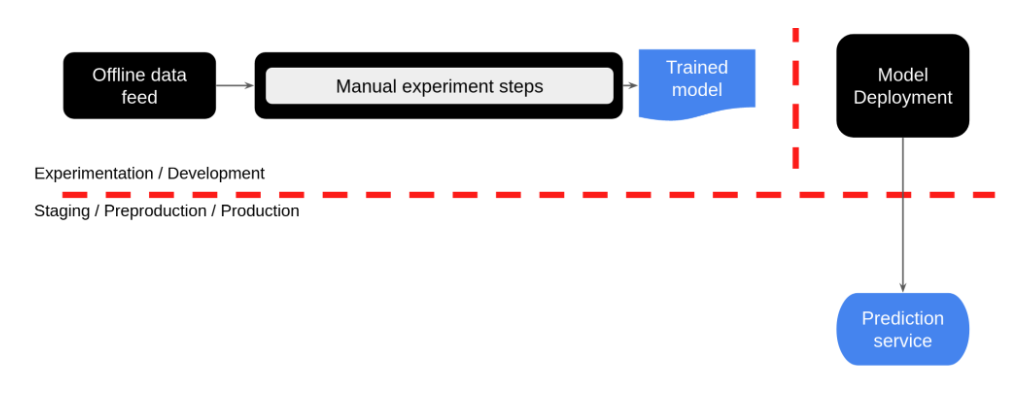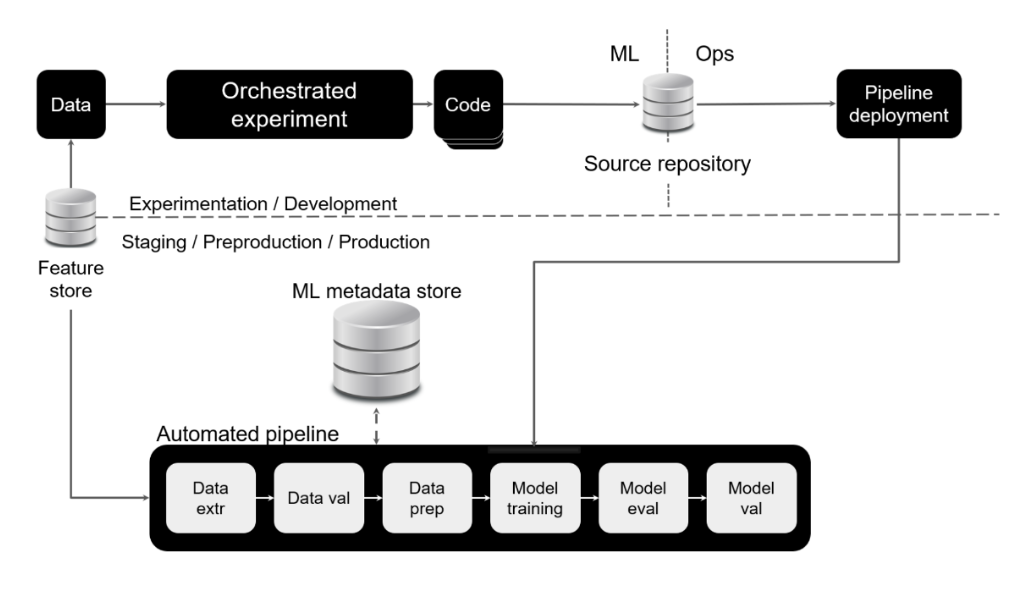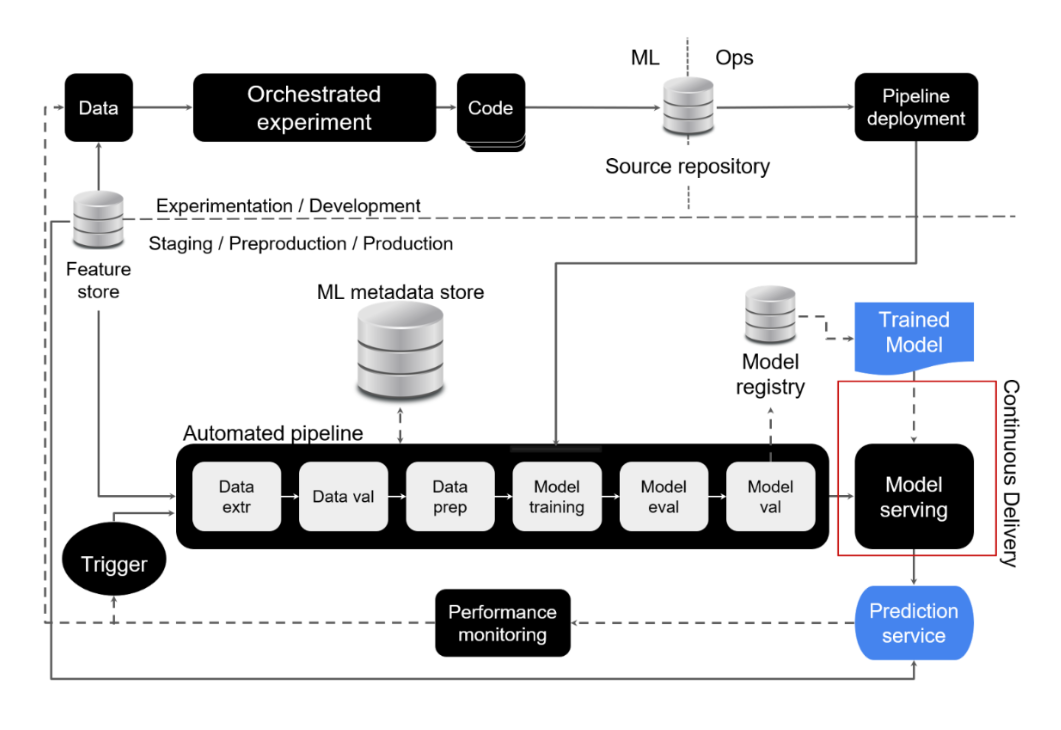Automation Workflows
Overview
Automation streamlines ML workflows and makes them faster and more reliable. This guide explains different levels of automation and key processes in ML operations.
ML Lifecycle
Machine learning follows a structured process from design to deployment. While not everything can be automated, automation improves efficiency.
- Design requires human input but can follow standardized steps
- Automation reduces manual effort in development and operations
ML Automation
ML systems evolve through different automation stages, improving speed and reliability.
- Manual: No tracking, makes reproducibility difficult
- Semi-automated: Some steps orchestrated for efficiency
- Fully automated: Continuous pipelines update models seamlessly
Manual Workflow
Most teams start with manual workflows, running experiments without automation.
- Models are trained and deployed manually
- No tracking, making it hard to reproduce results

Semi-Automated Workflow
Automation speeds up experimentation and deployment while improving tracking.
- Source code repository stores ML code versions
- Feature store provides reusable data inputs
- Model registry saves trained models for deployment
Continuous Delivery automates the process by using the latest trained model to deliver updated prediction services.

Predictions are also monitored in real time, triggering retraining when performance drops. The ML team can also analyze performance metrics for further improvements.

Fully Automated Workflow
A fully automated system continuously retrains and updates models without manual intervention.
- Continuous pipelines deliver the latest models
- Prediction services update automatically
A fully automated MLOps system improves the semi-automated setup by integrating the ML pipeline into a Continuous Delivery process and enables continuous updates and deployment of the latest models.

ML Automation in Design
The design phase involves domain experts and business input, making full automation impossible.
- Standardized workflows improve efficiency
- Documentation ensures reproducibility
ML Automation in Development
Automating development tasks speeds up training and improves model performance.
- Version control tracks code changes
- Orchestration tools automate training and tuning
ML Automation in Operations
Operations benefit the most from automation, ensuring models remain reliable over time.
- Automated testing checks data and model performance
- Continuous monitoring detects and fixes issues
Automating Model Retraining
Automated retraining ensures models stay accurate as data changes.
- Predictions are logged and monitored
- Performance metrics are stored in a metadata store
- If accuracy declines, retraining is triggered
- A new model is trained and deployed